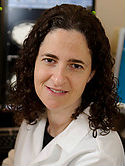Limitations of CT during PET/CT Journal Article
| Authors: | Gollub, M. J.; Hong, R.; Sarasohn, D. M.; Akhurst, T. |
| Article Title: | Limitations of CT during PET/CT |
| Abstract: | Our aim was to determine the diagnostic limitations of low-dose, unenhanced CT scans performed for anatomic reference and attenuation correction during PET/CT. Methods: The Radiology Information System at our oncologic hospital was queried during the 9-mo period from July 2002 to April 2003 for patients with PET/CT scans and diagnostic enhanced CT within 2 wk of each other. One radiologist interpreted the CT portion of the PET/CT (CTp) unaware of the PET results and the associated enhanced diagnostic CT (CTd). A medical student compared this interpretation with the official report of the CTd and listed all discrepancies between reports. A separate radiologist compared CTp and CTd images and classified true discrepant findings as due to lack of intravenous contrast, arm-position artifact, lack of enteric contrast, low milliamperage (mA), and quality of lung images. Results: Among 100 patients, the most common malignancies were lymphoma (n = 37), cancer of the colorectum (n = 31), and esophageal cancer (n = 15). Among 194 true discrepancies in which findings were missed at CTp, causes were as follows: (a) lack of intravenous contrast (128/194, 66%), (b) arm-down artifact (17/194, 9%), (c) quality of lung images (26/194, 13%), (d) lack of enteric contrast (15/194, 8%), and (e) low mA (8/194, 4%). Discrepancies were seen most commonly in detecting lymphadenopathy and visceral metastases. Conclusion: Most missed findings on the unenhanced CT portion of the PET/CT scans were due to technical factors that could be altered. Discrepant findings would have led to altered management in only 2 patients, suggesting a role for limited repeat imaging to reduce radiation and use of valuable resources. Copyright © 2007 by the Society of Nuclear Medicine, Inc. |
| Keywords: | adolescent; adult; child; controlled study; aged; aged, 80 and over; child, preschool; middle aged; major clinical study; clinical trial; positron emission tomography; diagnostic accuracy; sensitivity and specificity; neoplasms; colorectal cancer; reproducibility of results; computer assisted tomography; image analysis; image interpretation, computer-assisted; observer variation; lung non small cell cancer; tomography, x-ray computed; diagnostic imaging; algorithms; imaging system; image enhancement; subtraction technique; lymphoma; positron-emission tomography; intermethod comparison; contrast medium; artifact; esophagus cancer; lymphadenopathy; pet/ct; diatrizoate; meglumine diatrizoate; diagnostic ct; limitations of ct |
| Journal Title: | Journal of Nuclear Medicine |
| Volume: | 48 |
| Issue: | 10 |
| ISSN: | 0161-5505 |
| Publisher: | Society of Nuclear Medicine |
| Date Published: | 2007-10-01 |
| Start Page: | 1583 |
| End Page: | 1591 |
| Language: | English |
| DOI: | 10.2967/jnumed.107.043109 |
| PUBMED: | 17873133 |
| PROVIDER: | scopus |
| DOI/URL: | |
| Notes: | --- - "Cited By (since 1996): 18" - "Export Date: 17 November 2011" - "CODEN: JNMEA" - "Source: Scopus" |
Altmetric
Citation Impact
BMJ Impact Analytics
Related MSK Work





